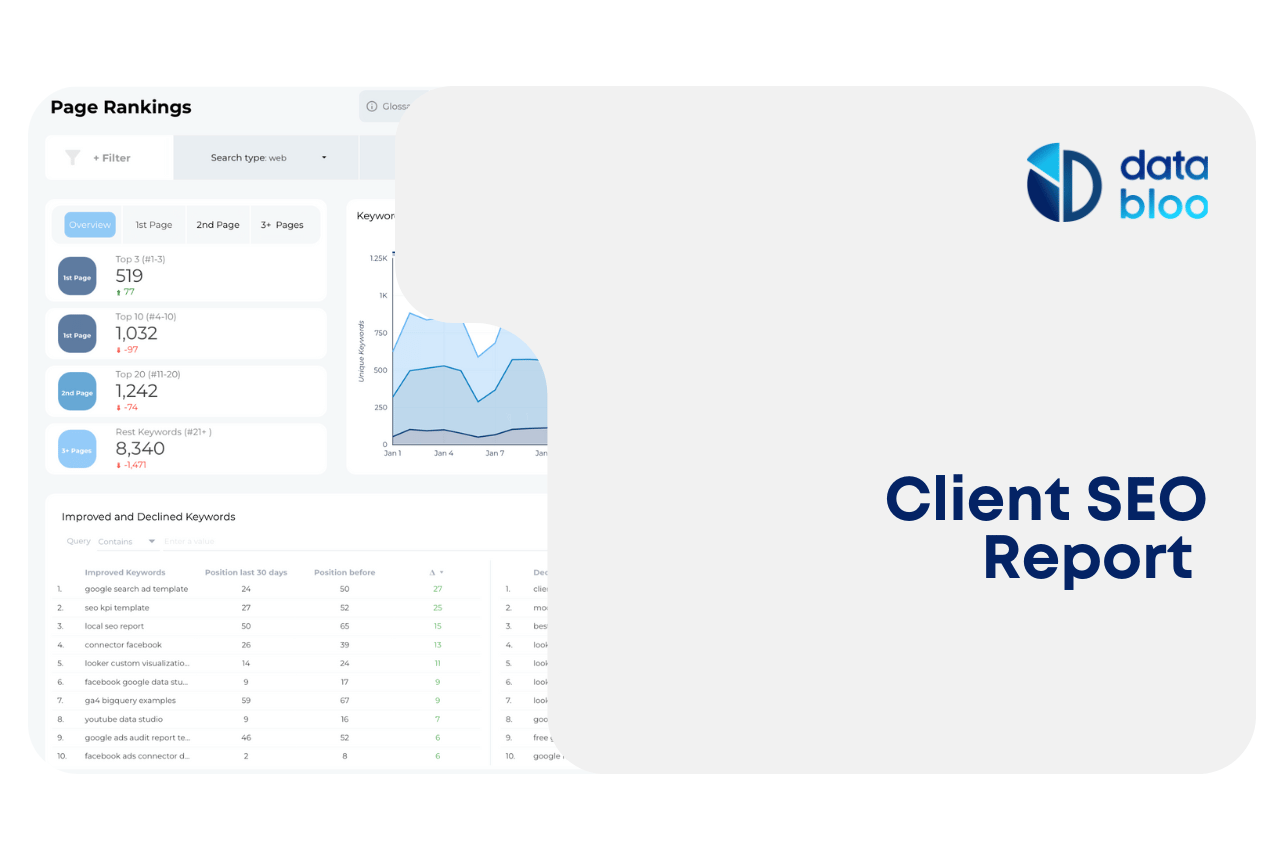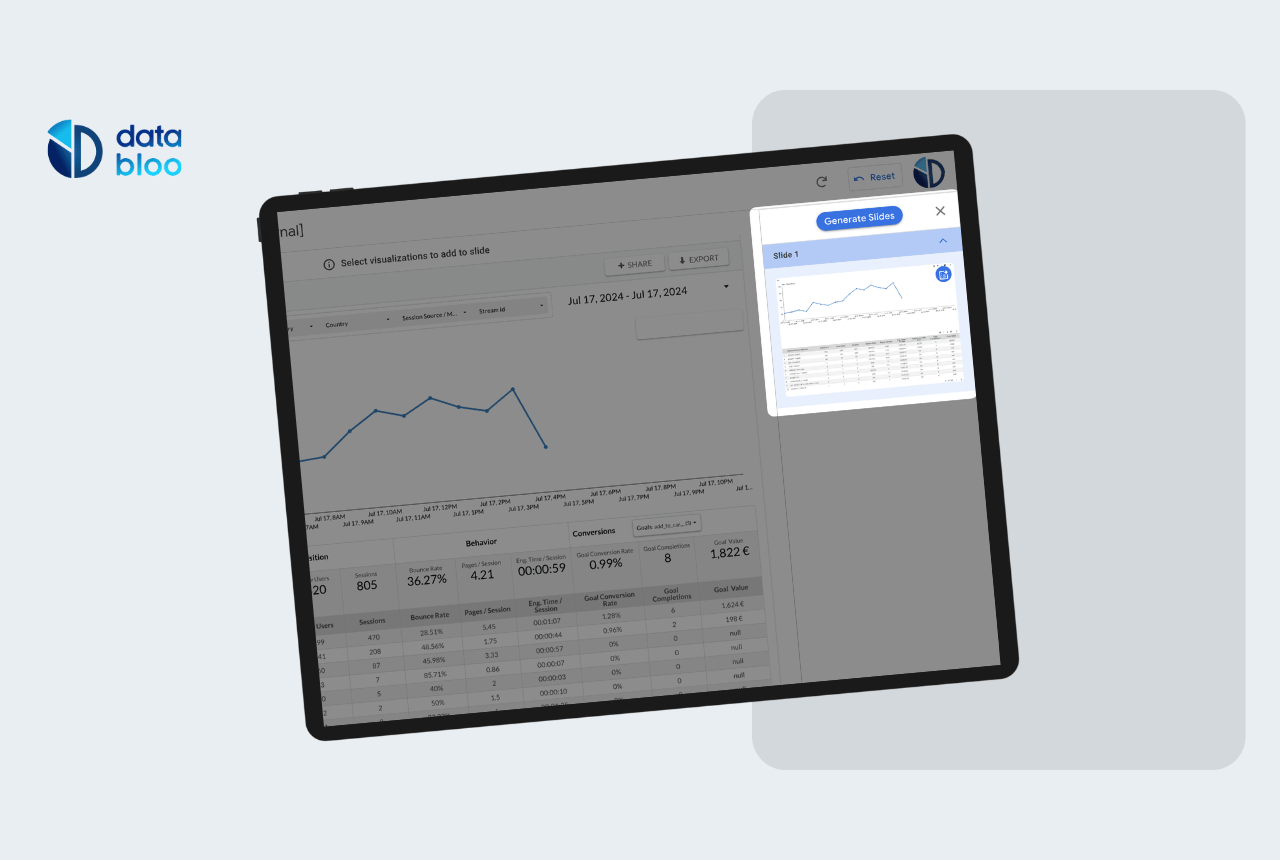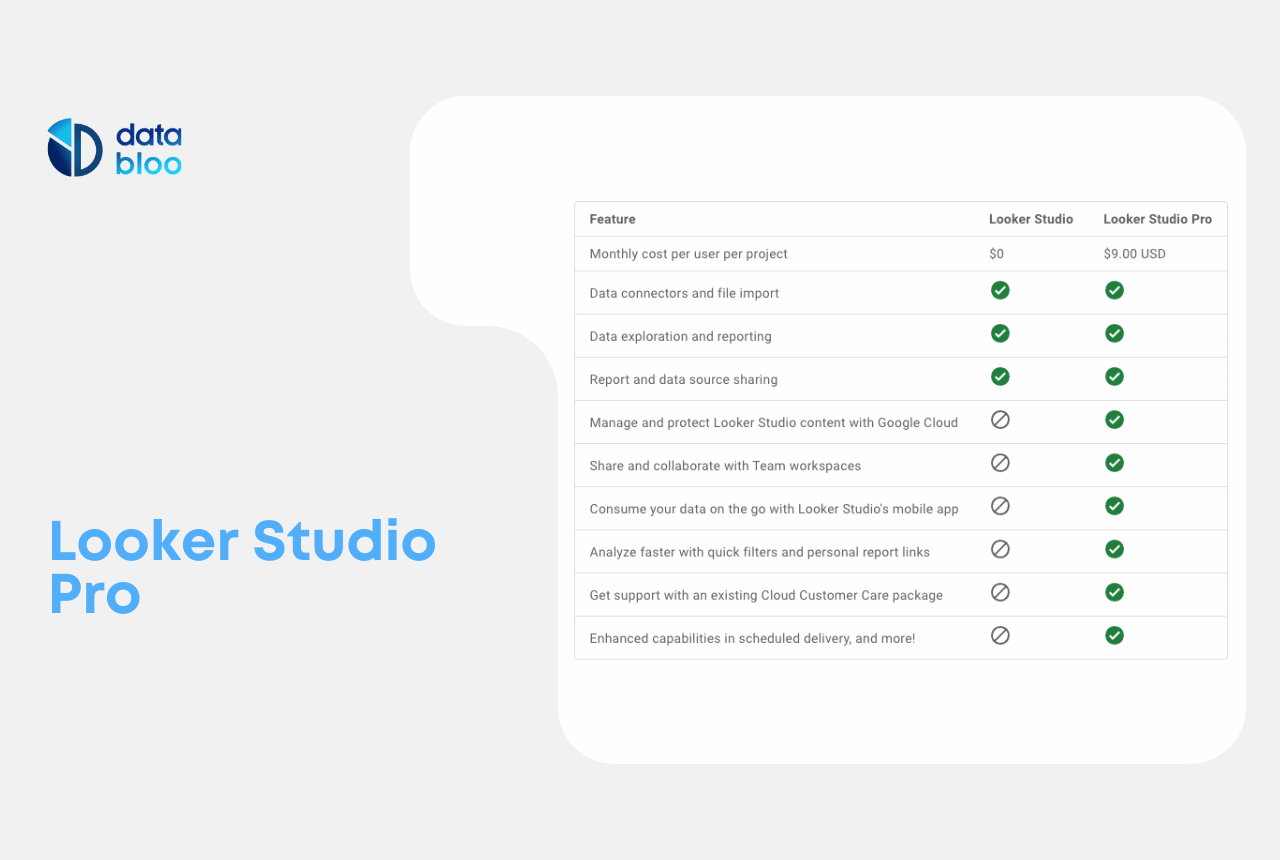Skip ahead >>
An SEO report is, without a doubt, the culmination of all your SEO efforts for a particular client.
The best SEO report will boost your client’s trust in your SEO work and ensure months and years of fruitful relationships.
A bad SEO report will leave a client confused and doubtful, making them second-guess whether they made the right decision to work with you.
In the article, we’ll highlight key differences between good and bad client SEO reports, cover what to include in your SEO report and share proven tools to create the best reporting experience for your clients.
Tune in!
Good SEO Report vs Bad SEO Report: Critical Difference
A good SEO report works on several levels.
From a technical standpoint, it displays all the required SEO metrics to highlight your current progress, answer any client questions, and support recommendations for the upcoming months.
But there’s also a psychological component: it facilitates trust towards your work regardless of circumstances.
The SEO landscape is not always straightforward. Regular Google Updates, fierce competition, and changing human behavior often create periods of uncertainty. Good SEO reports mitigate uncertainty, bad ones amplify it.
How to achieve it will be explained throughout the entire article, but for now, here are the key differences between a good and bad SEO report.
Bad SEO Report
- Overwhelms with too many unnecessary metrics
- Relies on outdated metrics
- Causes more questions than answers
- Contains generic recommendations
- Too simplified
- Omits competitors analysis
Good SEO Report
- Lets you quickly switch between high-level overview and in-depth SEO metrics
- Uses both real-time and historical SEO data
- Evaluates SEO performance in multiple contexts
- Contains clear, actionable recommendations
- Elicits a sense of progress and effort
- Easy to update (better automatically)
- Can be customized to a specific client’s needs
What To Include In Client SEO Report
To compile the best SEO report, you need to understand how a client thinks:
- A client rarely has a deep understanding of SEO nuances (don’t say EAT, topical authority and cluster in the same sentence)
Solution: SEO report sections with advanced data (e.g. keyword distribution graph) should be positioned next to basic, easy-to-understand metric (traffic, conversions) - A client often sees SEO in the context of business (every SEO metric is attached to ROI, growth rate, expenses, conversions)
Solution: whenever you can, add conversion data into your SEO reports (we’ll cover how to combine both later)
- A client can put priority on very random things out of blue (“I’ve read this article that website speed is what we need…”)
Solution: a SEO report that contains several layers (different tabs or sheets), high-level overview and advanced, ground-level metrics. That will let you quickly answer any client questions, but always expand context and get back on track.
The last part is very important, so here’s an example:
Let’s say a client focuses too much on one particular metric, a specific keyword in a specific article is stuck on the same position. A SEO report with several tabs, like the one below, will help you first focus on a client’s issue using the “Page Rankings” tab, but then quickly expand the context with other tabs. Such as “Organic Overview”.
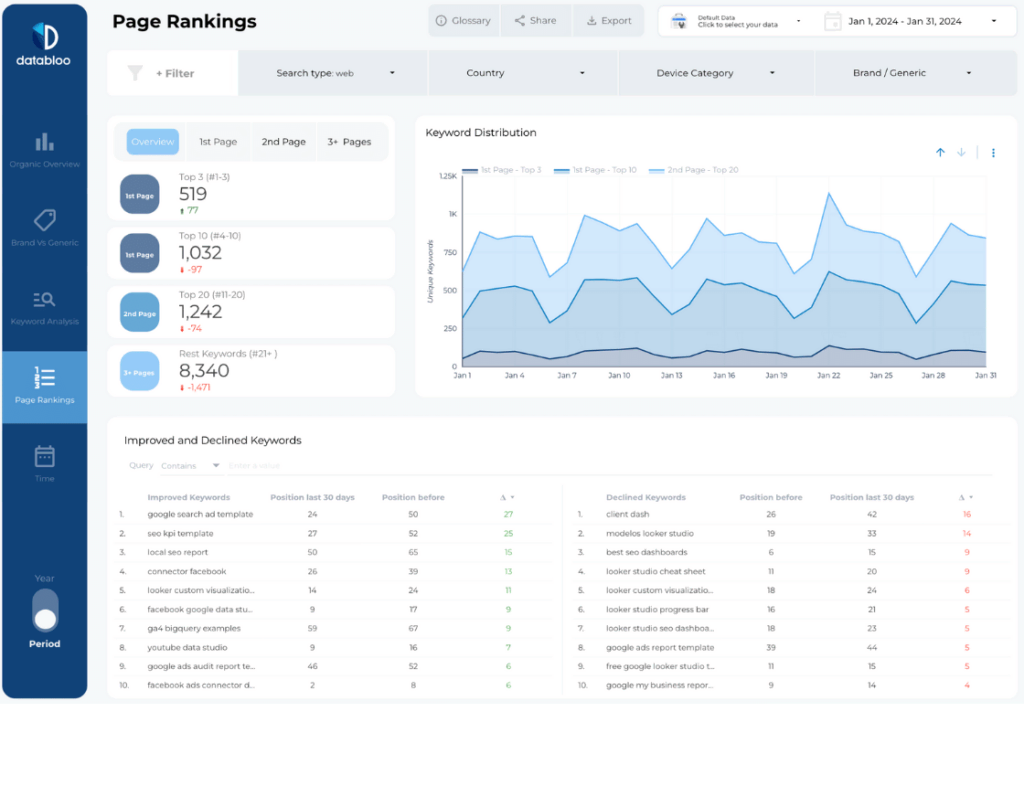
This way you can explain that a particular specific keyword might not grow clicks, but plenty of its long-tail variations do. Then tie it all back to overall traffic or traffic from a specific country, helping your client to understand that overall growth is not affected by just one keyword and that most important KPIs are still growing.
Now let’s cover the most important metrics and sections to include in your SEO reports.
Intro
Always start your report with a quick overview that covers:
- the work you’ve done since the last report
- high-level overview of your current search engine marketing (SEM) strategy
- necessary context (major Google Update, relevant industry news, improvements to your process and /or pipeline)
A well-done intro helps set up proper expectations and focus client attention on what’s important.
Traffic
Traffic is the most obvious and most used SEO metric, but focusing solely on traffic might create false narratives for both you and your clients.
For example, a common situation is when the traffic changes slightly, and yet a lot of positive things are happening unnoticed, such as increase in conversions, increased share of higher quality traffic, or increased performance for pages with commercial intent.
That said, we recommend always add several perspectives on traffic in your SEO reports, such as:
- Traffic over time
- Traffic is specific countries
- Traffic on specific devices
- Traffic for individual pages
Conversions
Including conversions in your SEO report will help you connect most of your SEO metrics to business outcomes. That is especially important when a client is focused entirely on conversions and ignores positive changes in rankings, or individual pages traffic, or website performance.
Often it’s hard to demonstrate the deep impact that good SEO has on conversions, so showing correlations between conversions and other SEO metrics is a great way to teach your clients to see SEO as a holistic investment.
Feel free to include following conversion data in your SEO client reports :
- Conversions over time
- Individual pages conversions
- Conversions in specific countries / on specific devices
- Conversion for specific keywords
Keyword Rankings
Keyword rankings used to be one of the main SEO metrics displayed in SEO reports. These days, however, search results are much more dynamic, and individual ranking fluctuations often don’t paint the bigger picture.
That said, keyword rankings are still an important metrics to showcase in SEO reports, especially the following data:
- Number of new unique keywords client website is ranking for
- Long tail vs short term distribution graph
- Keywords that bring in the most traffic or conversions
- Average keyword ranking position over time
Brand Performance
Brand performance is a very important set of SEO metrics, especially for clients who focus heavily on their digital brand recognition and presence.
These metrics will help you present how SEO contributes to client’s brand recognition in search:
- Brand related keywords performance
- Branded keyword analysis (impressions, average position)
- Branded keywords performance over time
Page Performance
A set of metrics to help you analyze and present performance of individual website pages such as blog articles, landing pages, or product pages.
Ideally, supports filters to isolate clusters of content or identify top-performing pages and underperforming pages that require optimization.
- Top performing pages
- Pages that will benefit from optimization or update
- Keyword / page distributions graph (e.g. data on how many pages are ranking on the first page of Google)
Next Steps
Every client SEO report should end with a short sector that contains:
- your targets for the next month
- expectations of performance
- any help you need from a client to improve SEO results (publish a new landing page, provide access to a certain information, etc.).
The last part is important to avoid roadblocks that will hinder your SEO efforts and delay results.
What To Leave OUT of SEO Client Report
Daily Ranking Fluctuations
SEO is inherently a long-term strategy, and daily changes in search rankings are normal and expected due to various algorithmic updates and market dynamics.
Emphasizing these fluctuations can lead to unnecessary anxiety and may mislead clients about the actual health of their SEO campaign. Instead, focusing on monthly or quarterly trends provides a more accurate and meaningful view of what’s really happening.
Speculations Not Supported by Data
Including speculations that are not backed by data can undermine your credibility as an SEO professional. Clients rely on your expertise and data-driven insights to make informed decisions.
Speculative information, especially if proven incorrect, can damage trust and lead to strategic missteps. Always ensure that every piece of data in your report is verifiable and directly applicable to the client’s goals.
Excessive Number of Metrics
While it might be tempting to include a vast array of metrics in an SEO report, this can often overwhelm and confuse clients rather than inform them. Common examples of excessive metrics include individual pages loading times and individual articles bounce rates.
Instead, it’s more effective to focus on key metrics that directly impact the client’s business objectives, such as conversion rates, organic traffic, and keyword performance. This approach not only simplifies the report but also helps in highlighting the effectiveness of the SEO efforts in a clear and concise manner.
How to Create an SEO Report: 2 options
- Manual (Excel of Google Spreadsheet)
Use Google Spreadsheets to create a table that include following rows or use Google Search Console export:
- Page name
- Impressions
- Clicks
- CTR (click-through rate)
- Device
Use sum and multiply formulas to calculate total monthly traffic (sum of all pages traffic in the last 30 days), CTR (total impressions divided by total clicks).
Add more metrics if required.
- Use Automated SEO report template
Use automated SEO reporting templates (example from Databloo). Log into client Google Analytics and Google Search Console, and the template will automatically be filled with relevant data, structured and designed for maximum insight.
You can use different SEO templates for different reporting purposes.
[screenshot – think All in search Console Report works best here?]
Advanced Types of SEO Reports And When You Need Them
Local SEO Report
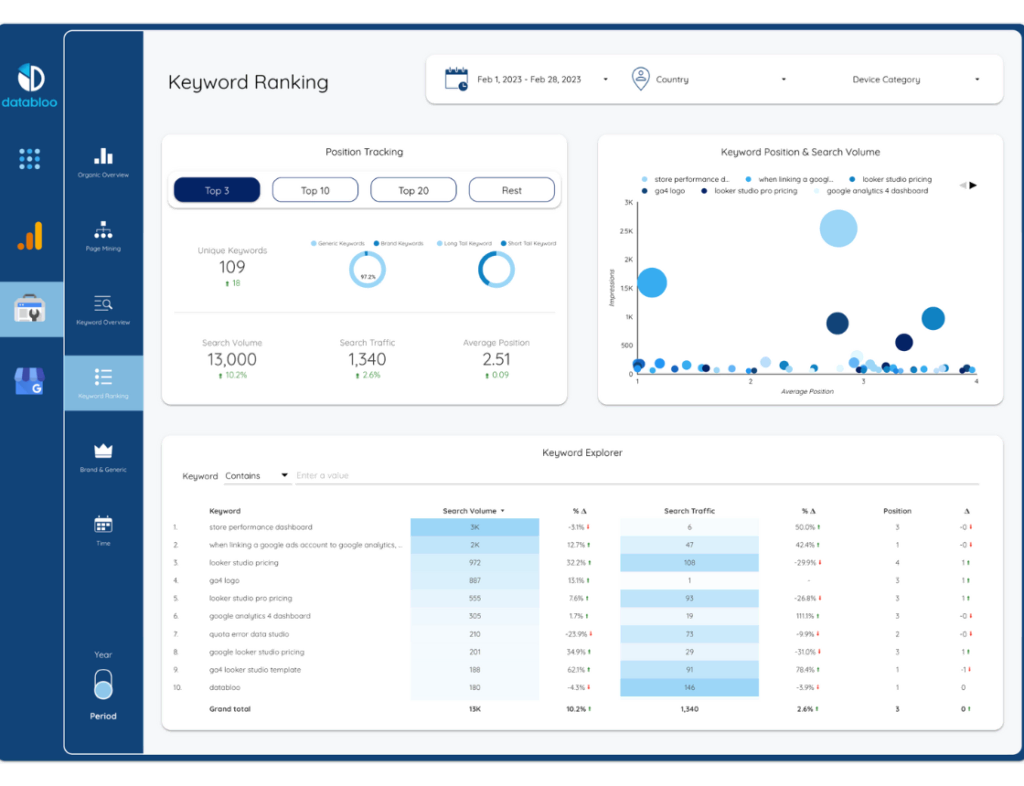
Ideal for businesses targeting specific geographic areas, this report focuses on local search rankings, Google My Business performance, and local competitor analysis. Use it to fine-tune local visibility strategies.
Ecommerce Report
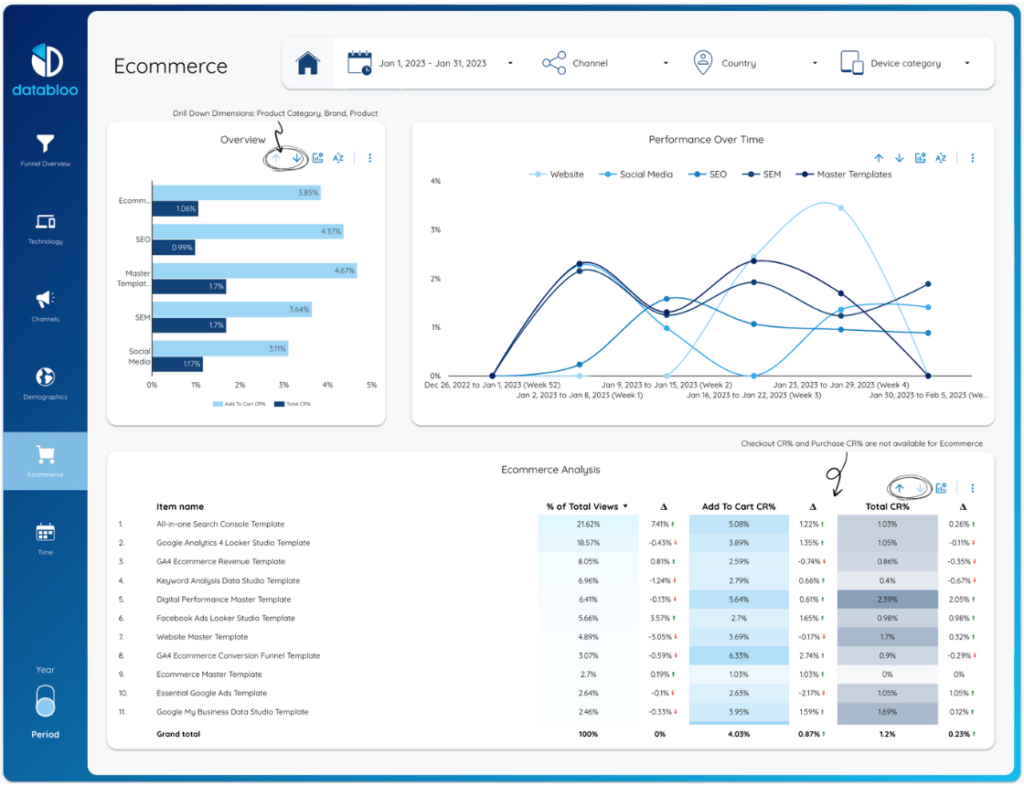
Essential for online retailers, it tracks product listing rankings, conversion rates from organic traffic, and customer journey analytics. This report helps optimize product pages and improve user experience.
Keyword Ranking Report
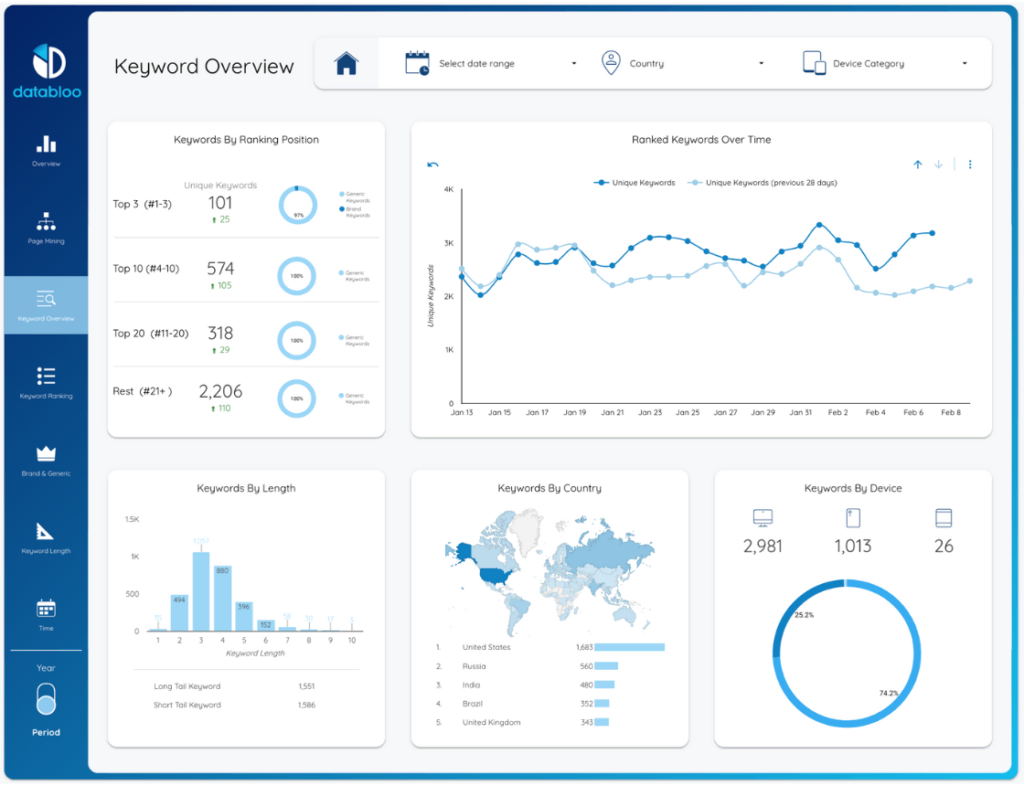
Crucial for monitoring the effectiveness of SEO strategies, it details changes in keyword positions, search volume, and SERP features. Use this to adjust content and optimize for target keywords.
Common Questions About SEO Client Reports
SEO reports are typically shared monthly to track progress and adjust strategies promptly. Annual reviews are also beneficial for assessing long-term trends and planning future objectives.
SEO reports can be shared through email, dedicated dashboards, or during face-to-face meetings. Using secure online platforms ensures that the data remains confidential while accessible to the client.
An SEO report should include key performance metrics such as organic traffic, keyword rankings, backlink quality, and conversion rates. It should also summarize actions taken and suggest future strategies.
Clients should use SEO reports to understand the impact of SEO activities on business goals, identify successful tactics, and decide where to allocate resources for continued improvement in search performance.

